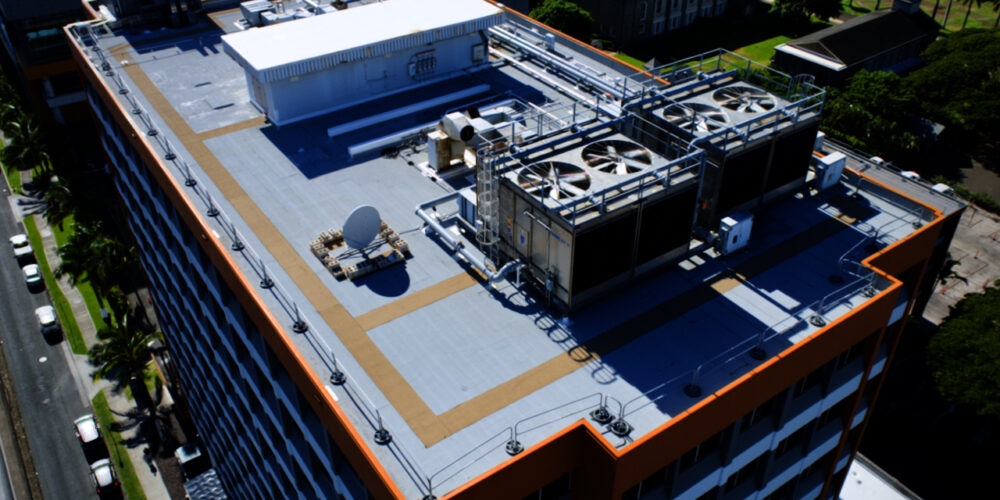
Roofing is a crucial aspect of any building, demanding meticulous attention to detail for durability and resilience. In this article, let’s explore the often-overlooked, yet indispensable component of a roof, the cant strip. Discover what a cant strip is, how they enhance the system, their materials, and when to integrate them into your project for optimal results.
What is a Cant Strip?
A cant strip is a triangular wedge-shaped material strategically placed at the intersection of a horizontal surface (commonly the roof deck) with a vertical surface such as a wall or curb. The need for a cant strip can be required for various building configurations including but not limited to exterior/parapet wall, intersections of different roof levels, intersecting structures, skylights, roof curbs, and many other vertical surfaces.
Serving a vital role in roofing and waterproofing projects, cant strips facilitate water drainage and smooth transitions between different roof planes.
How Are Cant Strips Made?
Cant strips come into existence through the utilization of diverse materials, each presenting distinctive characteristics and advantages. Conventional choices include lumber, available in either solid or laminated forms, recognized for its durability and straightforward installation.
Alternative cant strips constructed from flame-resistant or non-combustible materials, such as perlite or mineral fiber, are readily available. Primarily intended for conditions involving higher fire risks, these options are commonly recommended for their application in modified bitumen systems where torch application is utilized for the membrane.
It’s important to highlight that while these products may possess flame resistance, they may not offer adequate protection to combustible elements positioned behind them during the membrane application process.
The manufacturing process of cant strips entails shaping by cutting the chosen material into a precisely designed triangular wedge. The careful calibration of the height and angle of the cant strip is crucial to ensure smooth membrane performance and reduction of membrane stresses.
The selection of one specific cant strip type over another for a specific roofing project can be heavily influenced by the type of building conditions and roofing membrane being installed and the particular performance requirements.
Advantages of Using Cant Strips in Roofing
Membrane Support
Cant strips reinforce the membrane roofing and or waterproofing system by limiting stress between the horizontal and vertical surfaces which are often subject to movement. Reducing stress on the membranes in these areas prolongs the life and enhances the performance of the system components.
Smoothing Transitions
Creating a more membrane-friendly interface at roof plane convergences, cant strips enhances membrane longevity and promotes water flow away from the wall or vertical transition.
Compatibility with Roof Membranes and Components
It is critical that the cant strip is compatible and functional with all roofing system components it may come in contact with including roof membranes, wall materials, and roof-related flashing components, aiding in a comprehensive and watertight roofing or waterproofing system.
Water Management
By creating smooth transitions between roof planes or intersecting surfaces, cant strips help move water and enhance drainage of surface water on flat or low-slope roofs, averting structural issues and aiding in maintaining roof system integrity.
Projects That Benefit Most from the Use of Cant Strips
Knowing when to incorporate cant and tapered edge strips can be crucial for optimal performance of roofing and waterproofing systems. Consider their use:
- At roof junctions for a smooth transition.
- To manage water away from walls, curbs, or other transitions.
- With and roof membrane, fluid-applied roof system, and waterproofing materials to enhance performance and help prevent water infiltration.
Enhance Cant Strips’ Performance With Polyglass
Cant strips can be instrumental in preserving a roof’s designed performance. By incorporating cant strips into your roofing projects, you’re not just addressing water challenges; you’re elevating the overall integrity and durability of the entire roofing system. Roofing and Waterproofing systems are not just a necessity; it’s an investment in the long-term health of your building.
Preparing for a roofing project? Reach out to Polyglass today to discover solutions tailored to your specific needs.